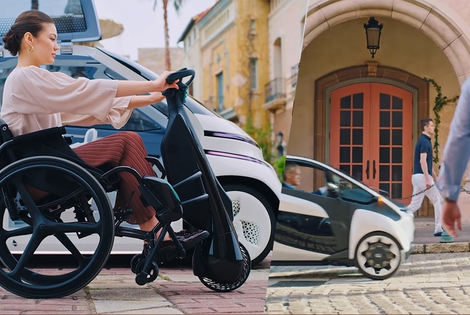
Milan has announced one of Europe’s most ambitious mobility schemes, known as Strade Aperte (open roads). Its goal is to reduce cars in phase 2 of the lockdown by increasing bike lanes and pedestrian areas.
Commuting from house to work is really hard for all European. Being a source of stress, according to a European survey (commissioned by Ford to Opinion Matters and carried out in April) getting to work from home is becoming a terrible nightmare. Due to increasingly less predictable journey times, caused by ever-worsening traffic conditions, 63% of the people interviewed said to
Commuting from house to work is really hard for all European. Being a source of stress, according to a European survey (commissioned by Ford to Opinion Matters and carried out in April) getting to work from home is becoming a terrible nightmare.
Due to increasingly less predictable journey times, caused by ever-worsening traffic conditions, 63% of the people interviewed said to get late to work at least once a month, with peaks of 80% in London, while 15% of them leave home at least 30 minutes in advance, in order not to be late.
Lots of people will think all workers need to do is leaving the car in the garage and take the public transport. Yet, according to the survey, the younger workers, whose age range from 18 to 34 years, are the ones who used public transport the most, but, oddly, also those who spend more time commuting to work and with the highest stress levels.
In Rome, the stress level is so high that commuting to work is compared to house moving, while in London it is considered worse than a dentist appointment.
The survey has been carried on 5,500 people living in Rome, Barcelona, Berlin, London, Madrid and Paris. Statically, they all share a common point: commuting to work is more stressing than working itself.
According to the survey, commuting to work and back home back and forth to work lasts in average, 111 minutes in Rome, 104 minutes in London and 100 minutes in Madrid. Rome is the city where people are stressed the most due to daily commuting (57%), followed by London (41%) and Paris (35%).
The highest stress levels can be generally observed in commuter using three or more means of transport. 43% of them admitted not to able to reach the workplace at least once in the last year, mainly due to strikes and public transport disruptions. Thus, though car is stressing, public transport as well is annoying.
Along with Smart Mobility and Handle On Mobility projects, Fords relies on Andreas Ostendorf, Vice President for Sustainability, Environment and Safety Engineering, for a possible solution. “For many people it can feel like they have done a full day before they have even set foot in the office,” explained Mr Ostendorf. “Pedestrian walkways, bicycles, buses, trains, vehicles, trams, shuttle buses – all of these need to be connected and integrated to optimise urban mobility in the future.” But there is still a very long way to go…
Siamo anche su WhatsApp. Segui il canale ufficiale LifeGate per restare aggiornata, aggiornato sulle ultime notizie e sulle nostre attività.
![]()
Quest'opera è distribuita con Licenza Creative Commons Attribuzione - Non commerciale - Non opere derivate 4.0 Internazionale.
Milan has announced one of Europe’s most ambitious mobility schemes, known as Strade Aperte (open roads). Its goal is to reduce cars in phase 2 of the lockdown by increasing bike lanes and pedestrian areas.
Formula 1, the world’s most important auto racing championship, has decided to turn the page and aim for carbon neutrality with the support of its teams, drivers and the whole racing circus.
Toyota and LifeGate began telling the story of hybrid mobility back in 2006, now, on the road to the Tokyo 2020 Olympics, they’re still treading the path of sustainable mobility. Here are the main steps of the journey.
Germany’s first solar bicycle lane could be the prototype for the roads of the future. The photovoltaic tiles melt snow and ice, and are capable of absorbing noise.
The Vespa is back in an electric version. Production has just started and the first models can be reserved online starting from October.
The city of Utrecht, in the Netherlands, is home to a bridge for cycling and walking that stretches over roof garden of a Montessori school. This project enhances practicality and will allow families to bring children to school by bike, passing through green areas. Despite their functionality, bridges are often seen as an infrastructure that is
The Lego hair bike helmet is the latest Internet craze. For now it’s just a prototype but production on a large scale will probably start soon.
Just as fires often give way to new growth, after the Dieselgate scandal, which saw Volkswagen cheating on US emission rules, the German car manufacturer radically changed course, beginning to focus on sustainable mobility. The German car company aims to propose thirty zero-emission models and produce at least one million battery electric vehicles by 2025. An ambitious mission
Sustainable, two-wheel mobility is triumphing in Copenhagen. After years of investments, policies, and infrastructural changes, bikes now outnumber cars in the city centre. The website Copenhagenize has released data linked to the number of vehicles entering the city centre, which are monitored by the city’s administration on a daily basis. Last year, 265,700 bikes have entered







